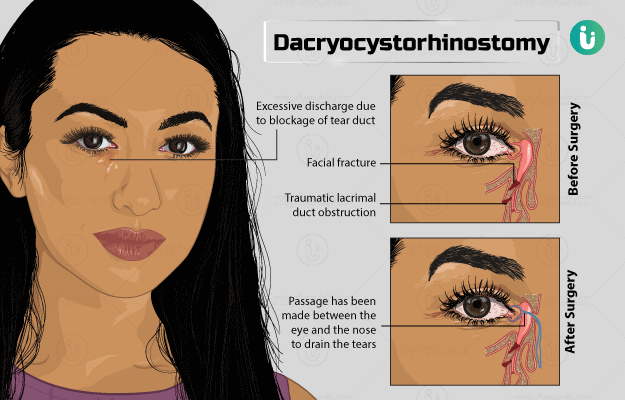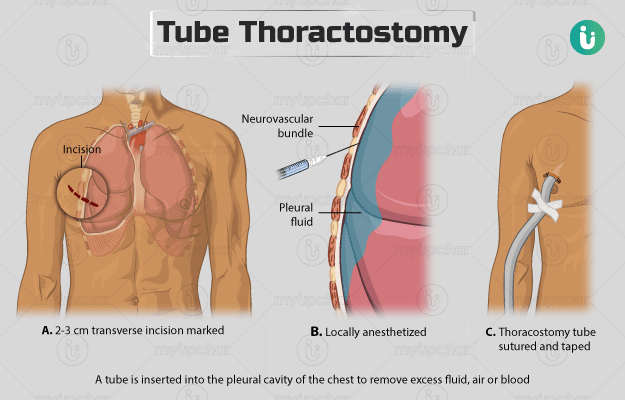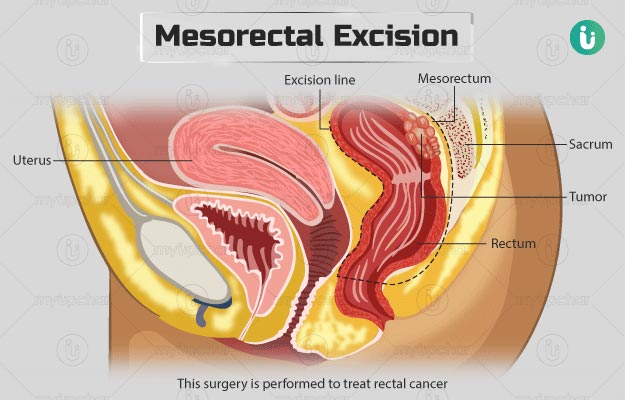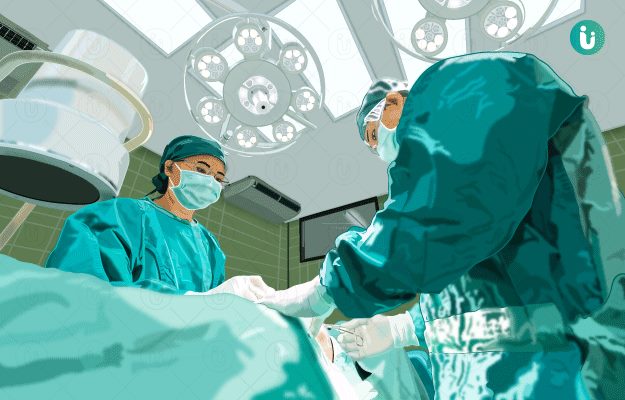Summary
Dacryocystorhinostomy is a surgical procedure to treat a blockage in the tear duct. In this procedure, a new passage is made between the eye and the nose to drain the tears. It can be performed either as an external or endoscopic procedure. Your doctor will check your eye, nose, and general health before the surgery. You will be given anaesthesia, relaxation medicine, or medicine for numbness of the surgical site during the surgery. A tube will be inserted to the new passage to keep it open; it will be removed after a while. After the surgery, avoid driving, doing any strenuous exercise, or drinking alcohol. Care should be taken to keep the wound area dry and uncovered. A follow-up appointment is needed to remove the stitches and tube.



















